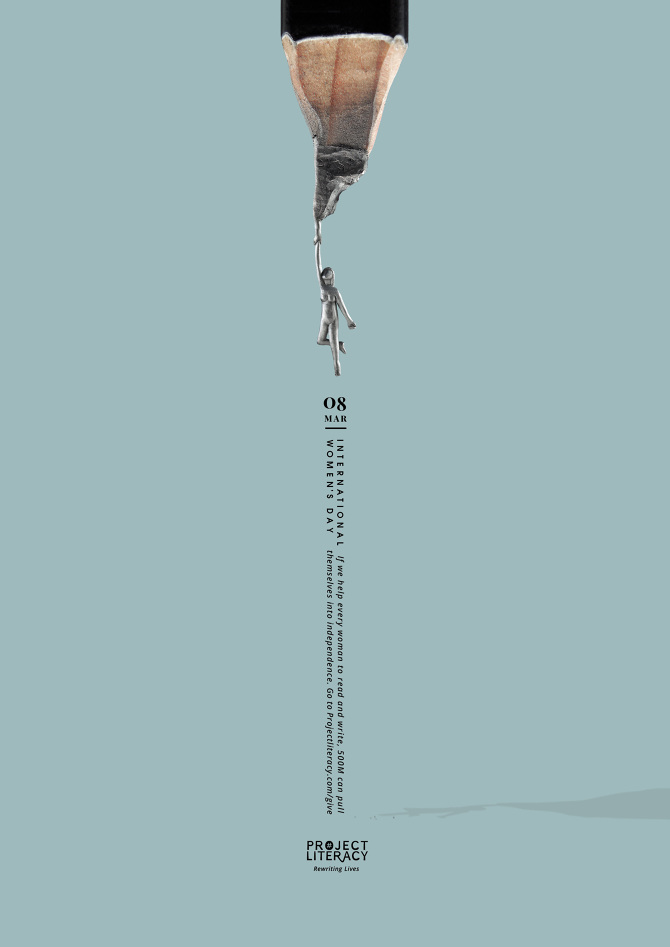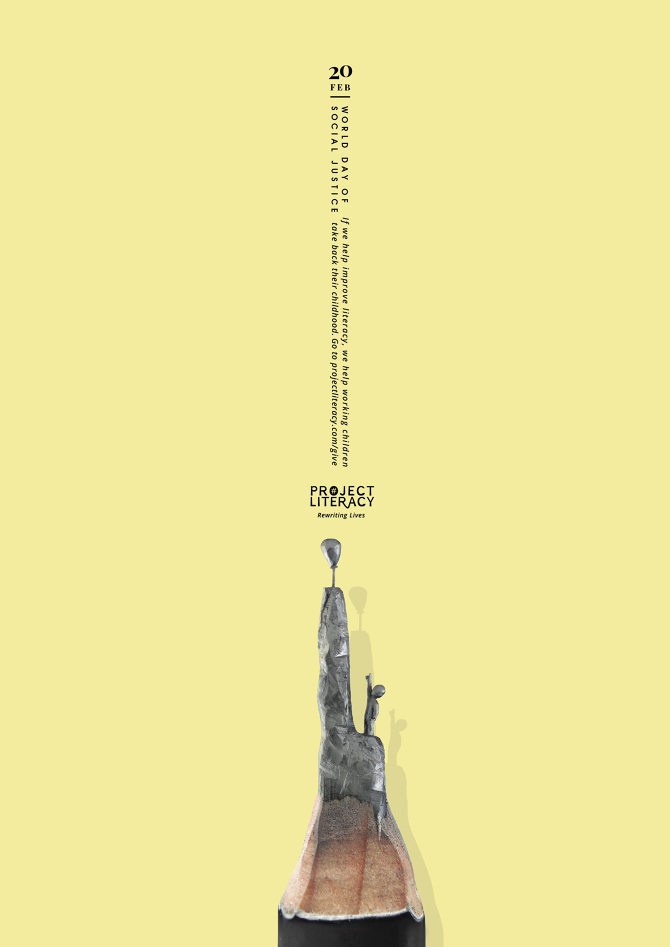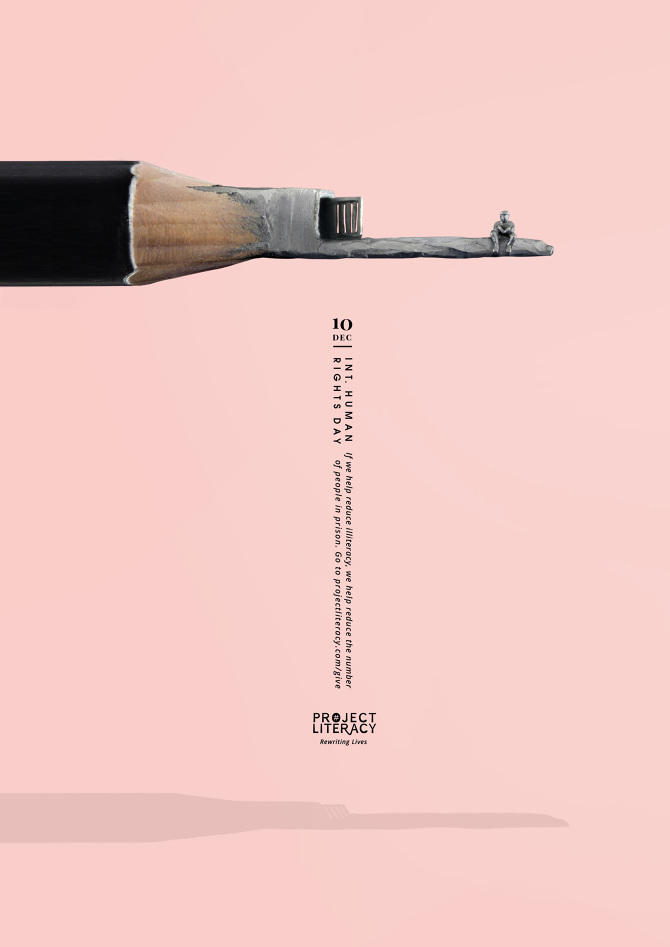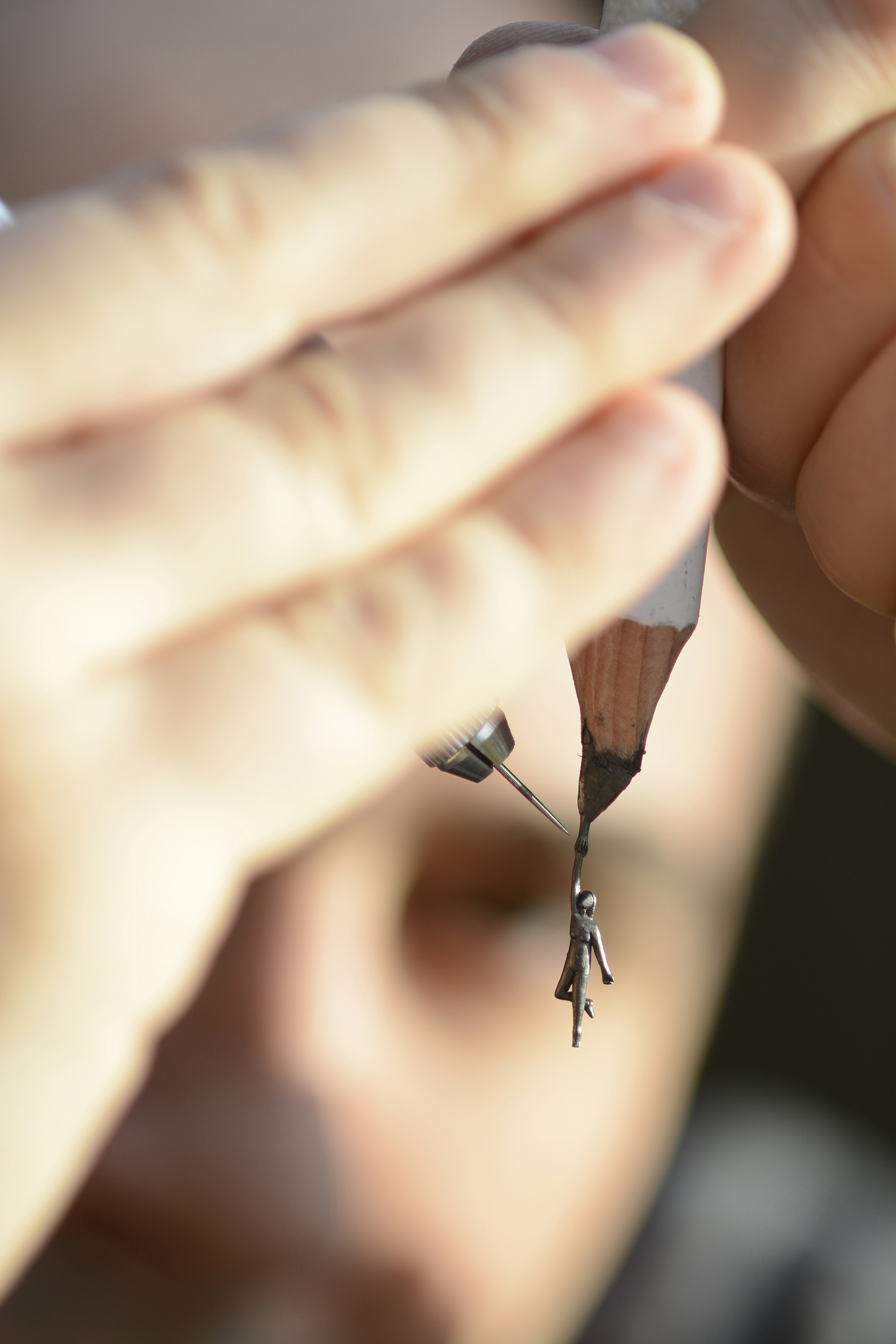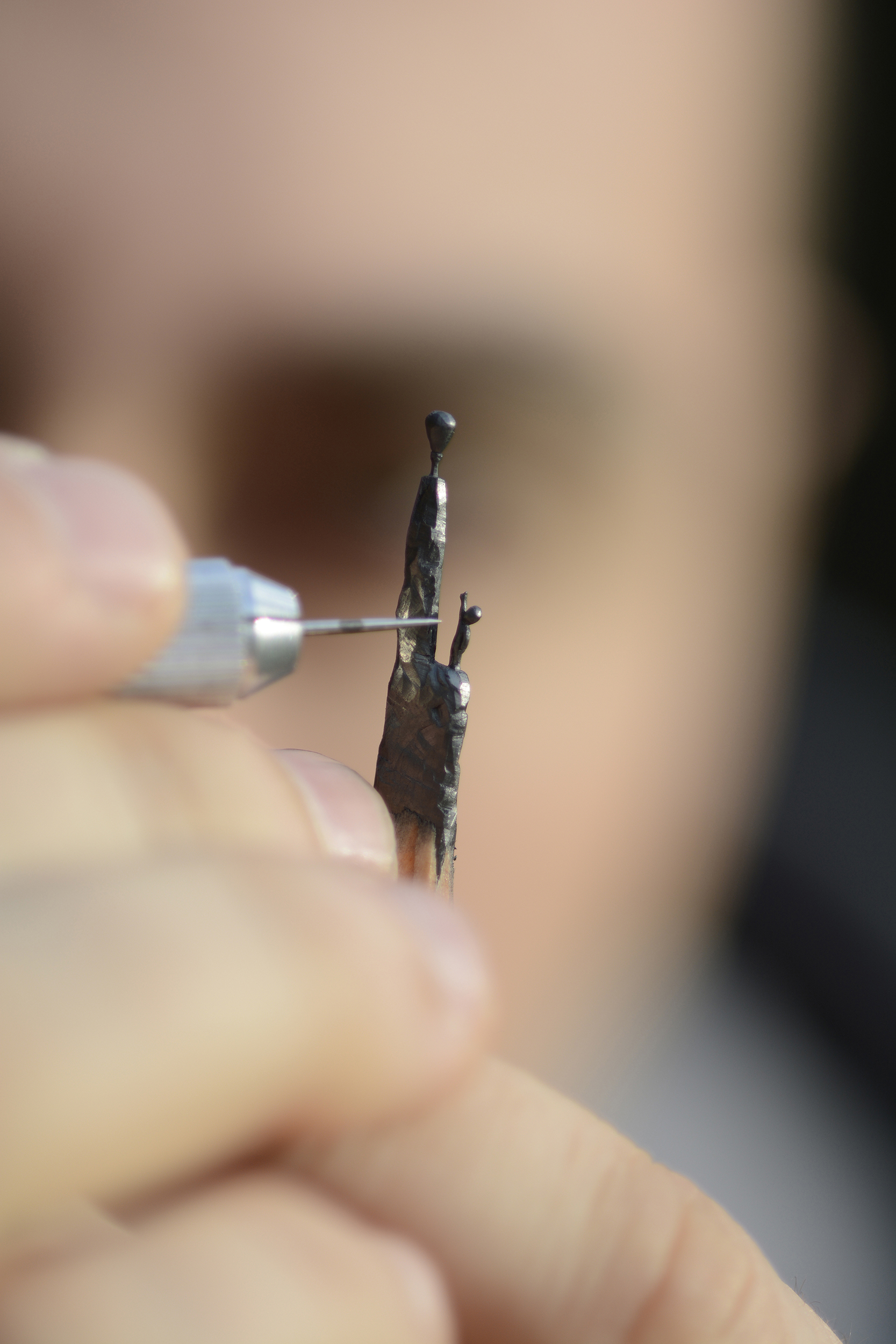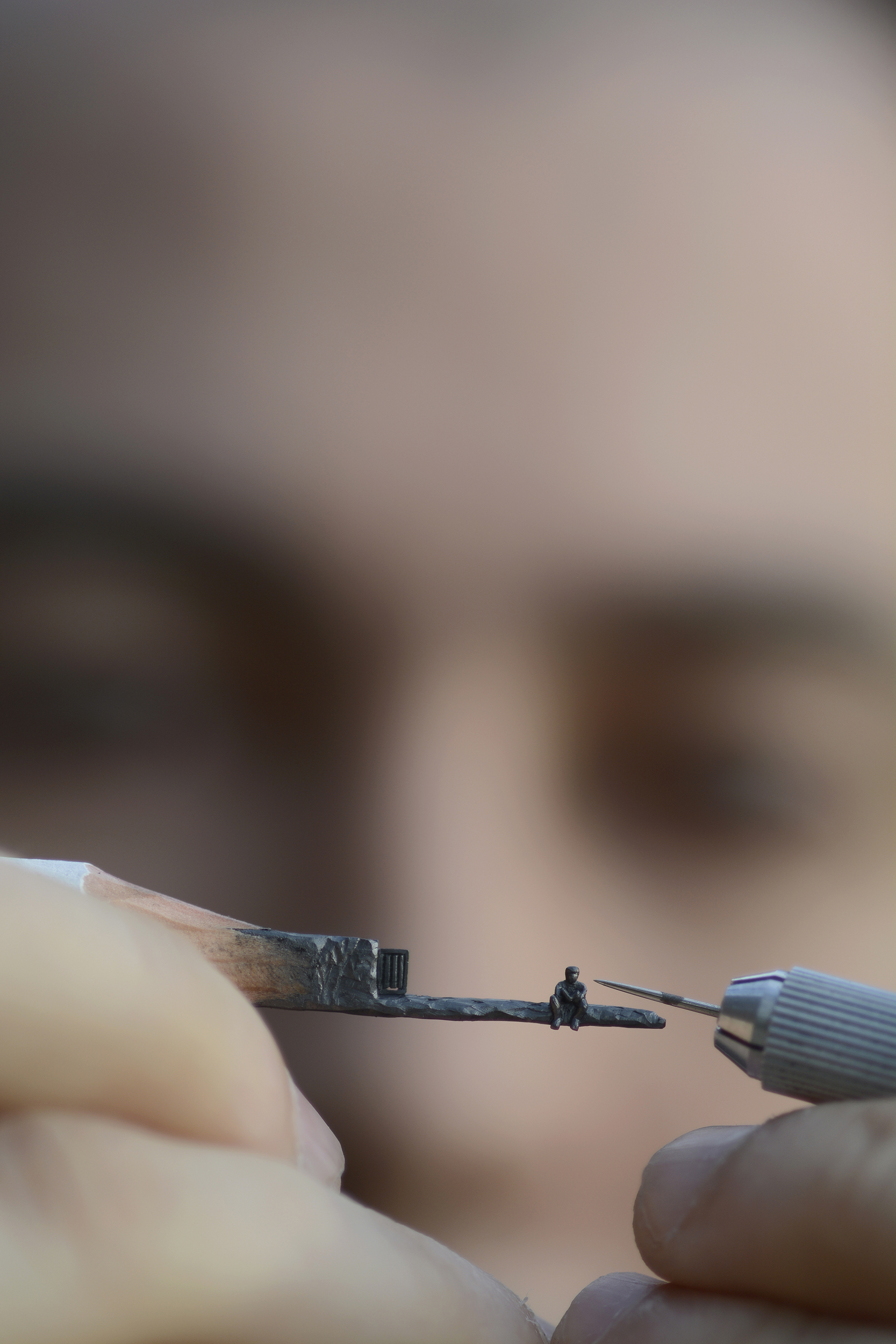In 2016, I embarked on a deeply meaningful collaboration with Project Literacy, a global campaign dedicated to raising awareness about the profound impact of illiteracy on individuals and communities worldwide. My role in this initiative was to create a series of pencil tip sculptures that would visually represent the transformative power of literacy. Each sculpture, no larger than a few centimeters, was crafted to convey a powerful message—one that illustrated how literacy can address some of the most pressing issues facing society today.
The Pencil as a Universal Medium
The choice to use pencils as the foundation for these sculptures was far from arbitrary. A pencil is an everyday object—simple, accessible, and familiar. But in this context, it became something much more: a universal symbol for education, communication, and creativity. Pencils are tools for writing, and writing is the foundation of literacy. Yet, when carved into sculptures, the pencil itself became a medium for storytelling, capable of conveying complex social messages through its form.
The fragility of graphite mirrors the delicate nature of the issues I aimed to address. Each sculpture was a visual metaphor, not just for the problems of illiteracy, but for the solutions that literacy can offer. Whether it was a woman being lifted toward independence or a child reclaiming their lost childhood, each piece was crafted to remind viewers that literacy has the power to elevate, restore, and liberate.
Crafting Stories in Millimeters
Each sculpture presented unique challenges and carried a distinct message. For International Women’s Day, the sculpture of a woman being lifted symbolizes how literacy can empower millions of women worldwide. The core message was clear: “If we help every woman to read and write, 500 million women can pull themselves into independence.” This sculpture was particularly challenging due to its fragility and the complexity of carving it upside down. Working in reverse required extra focus on proportionality and anatomical accuracy, making the creation process an intricate balancing act between artistic vision and technical precision.
For World Day of Social Justice, the focus was on child labor and the impact of literacy on young girls forced into child marriage. The sculpture depicted the silhouette of a child standing at the base of a cliff, reaching up toward a balloon that hovers at the top of the cliff. This scene symbolizes the child’s desire to reclaim their innocence and childhood through education. The core message behind the piece was: “If we help all girls become literate, child brides will fall by a sixth, as girls regain their innocence.” This sculpture captured the emotional distance between a child and their lost childhood, with literacy serving as the bridge to that long-lost sense of freedom and opportunity.
The third sculpture, focusing on crime and incarceration, presented a man sitting on a cliff edge, reading a book. Behind him, an open prison door symbolizes the possibility of freedom through education. The idea behind this piece was simple but profound: “If we help reduce illiteracy, we reduce the number of people in prison.” The open cell door represented the way literacy can unlock opportunities for rehabilitation and a brighter future, allowing individuals to break free from the cycle of crime. This sculpture was designed to show that literacy is not only a tool for personal growth but also a pathway to freedom, both metaphorically and literally.
Overcoming Challenges in the Creative Process
Working with graphite as a medium is an inherently fragile process. The material itself is delicate, and one wrong move or moment of inattention can cause the entire sculpture to break, forcing a restart. Throughout the project, this constant risk meant that every step required immense focus and precision, as the fragility of the graphite mirrored the social issues I was aiming to represent. The pencil, while simple in form, became a complex medium, and its inherent delicacy highlighted the weight of the themes being addressed.
Adding to the challenge, there were some sculptures where additional details could not be incorporated due to the size constraints and the thinness of certain parts of the sculptures. Including those finer elements increased the risk of compromising the entire piece, as even the smallest pressure on fragile parts could result in a break. This was especially evident in the sculpture of the woman “hanging,” which not only required carving in an upside-down orientation but also demanded anatomical precision. This positioning added complexity, making it difficult to maintain proportion and balance while ensuring the sculpture remained intact.

Despite these challenges, each piece was completed with great care and attention. The process was not just about overcoming technical difficulties, but about ensuring that the art communicated its message effectively. Each sculpture was a visual metaphor for the resilience needed to overcome obstacles, whether in life or in art. In the end, the fragility of the medium became a part of the story itself, underscoring the delicate balance between literacy and the global issues it can help resolve.
The Role of Art in Advocacy
Through this collaboration, I came to understand more deeply the role that art can play in advocacy. Art has a unique ability to communicate complex ideas in a way that is both accessible and emotionally resonant. The pencil sculptures were not just about aesthetics—they were about creating a visual language that could convey the urgency of literacy issues to a global audience.
The sculptures became a focal point in Project Literacy’s larger campaign, used in a variety of media to drive home the message that literacy is not just a basic human right but a fundamental building block for a better world. The connection between the simplicity of the pencil and the complexity of the issues at hand was intentional. Literacy, like a pencil, is an ordinary tool, but in the right hands, it can create extraordinary change.
A Lasting Impact
This collaboration with Project Literacy remains one of the dearest projects in my artistic career. The process of working on these pencil-tip sculptures reminded me that even the smallest gestures can hold immense meaning, and how art, when used thoughtfully, can advocate for social change profoundly. Through each sculpture, I had the opportunity to contribute to a global movement that strives to improve lives through literacy—a mission that resonated deeply with me as both an artist and an individual who believes in the transformative power of education.
The pencil, which is traditionally a simple tool for writing, evolved into a powerful medium for advocacy in this project. Every sculpture conveyed hope, symbolizing the possibility of breaking free from cycles of poverty, oppression, and inequality through education. The themes embedded in these miniature pieces—empowerment of women, protection of children, and the rehabilitation of individuals—demonstrated that literacy is much more than a basic human right; it is a key to unlocking human potential.
Although these sculptures were small, their messages were universal and far-reaching. They encapsulated the idea that education, no matter how basic it may seem, can be a catalyst for change on a global scale. The intricacies of carving these sculptures also mirrored the complexities of the issues they represented—delicate, nuanced, and deeply impactful.
Looking back, this project reaffirmed my belief that art is not just a means of expression but a vehicle for inspiring real-world change. Each piece, though small, contributed to a larger conversation about the importance of literacy in creating a more just and equitable world. The impact of these sculptures extends far beyond their physical form, as they continue to serve as symbols of how art and education can work together to transform lives.


